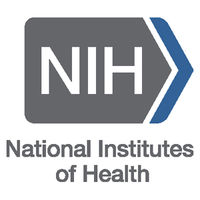预约演示
更新于:2025-10-16
Lifileucel
更新于:2025-10-16
概要
基本信息
非在研机构- |
最高研发阶段批准上市 |
首次获批日期 美国 (2024-02-16), |
最高研发阶段(中国)- |
特殊审评优先审评 (美国)、突破性疗法 (美国)、快速通道 (美国)、加速批准 (美国)、孤儿药 (美国)、再生医学先进疗法 (美国) |
登录后查看时间轴
关联
10
项与 Lifileucel 相关的临床试验NCT06190249
A Phase I Study to Assess the Efficacy and Safety of Autologous Tumor Infiltrating Lymphocytes (LN144) with Adjuvant Pembrolizumab for Treatment of Immunotherapy Naïve Patients with High Risk Stage IIIb-dResectable Melanoma
The purpose of this study is to evaluate the efficacy of adjuvant adoptive cell therapy (ACT) via infusion of LN-144 (autologous TIL) followed by interleukin-2 (IL-2) after a nonmyeloablative lymphodepletion (NMA-LD) preparative regimen, followed by Pembrolizumab.
开始日期2024-12-02 |
申办/合作机构 |
NCT06481592
A Phase 2, Multicenter, Open-label Study of Lifileucel (Tumor-infiltrating Lymphocytes [TIL]) in Participants With Previously Treated Advanced Endometrial Cancer.
The purpose of this study is to investigate the efficacy and safety of the lifileucel regimen in participants with previously treated endometrial cancer.
开始日期2024-10-29 |
NCT06538012
Efficacy and Safety of Autologous Tumor-Infiltrating Lymphocytes (TIL) Therapy Combined With Pembrolizumab Immunotherapy in Patients With Advanced or Metastatic Refractory Lung Cancer
This Phase I/II study evaluates the safety and efficacy of autologous tumor-infiltrating lymphocytes (TIL) therapy combined with Pembrolizumab (Keytruda) immunotherapy in patients with advanced or metastatic refractory lung cancer. Lifileucel (Amtagvi), the first FDA-approved TIL therapy, has demonstrated significant success in treating unresectable or metastatic melanoma by utilizing the patient's own immune cells to combat cancer. This study aims to apply a similar approach to lung cancer. TILs will be harvested from patients' tumors, expanded in vitro, and infused back into the patients following a non-myeloablative lymphodepletion regimen. Pembrolizumab, a monoclonal antibody targeting the PD-1 receptor on T cells, will be administered to enhance the immune response. The primary endpoint is to determine the objective response rate (ORR) of this combined therapy. Secondary endpoints include disease control rate (DCR), progression-free survival (PFS), overall survival (OS), duration of response (DOR), and quality of life (QoL). This trial aims to offer a novel, personalized treatment option for patients with limited therapeutic alternatives.
开始日期2024-08-20 |
申办/合作机构 |
100 项与 Lifileucel 相关的临床结果
登录后查看更多信息
100 项与 Lifileucel 相关的转化医学
登录后查看更多信息
100 项与 Lifileucel 相关的专利(医药)
登录后查看更多信息
38
项与 Lifileucel 相关的文献(医药)2025-12-01·CURRENT PROBLEMS IN CANCER
Current perspectives on Lifileucel tumor-infiltrating lymphocyte therapy: A paradigm shift in immunotherapy
Review
作者: Anwar, Sirajudheen ; Rao Puppala, Eswara ; Kaur, Simran Deep ; Bedi, Neena ; Kumar, Nitesh ; Abubakar, Md ; Ahemad, Nafees ; Kapoor, Deepak N
Lifileucel, a tumor-infiltrating lymphocyte (TIL) therapy, provides renewed hope for individuals with advanced, treatment-resistant malignancies. This is a groundbreaking advancement in cancer immunotherapy. Revolutionizing the way the immune system fights cancer, this state-of-the-art cellular therapy takes advantage of TILs' innate capacity to target tumors. Lifileucel is an innovative medicine that is garnering attention in oncology. It has shown remarkable efficacy in clinical trials, assisting individuals unresponsive to other therapy in sustaining their responses and enhancing their survival rates. This paper provides a comprehensive overview of contemporary perspectives on Lifileucel, including its mechanism of action, clinical results, challenges and potential applicability to a broader spectrum of solid tumors. The Lifileucel concept has initiated a new epoch in personalized cancer therapy. This review offers a forward-looking perspective on the potential advancements and opportunities for establishing Lifileucel and TIL-based therapies as a cornerstone in cancer therapy.
2025-10-01·CLINICAL CANCER RESEARCH
FDA Approval Summary: Lifileucel for Unresectable or Metastatic Melanoma Previously Treated with an Anti–PD-1–Based Immunotherapy
Article
作者: Das, Asha ; Gao, Qianmiao ; Hu, Lianne ; Bross, Peter ; Theoret, Marc R. ; Fan, Chaohong ; Tegenge, Million ; Brewer, Jamie R. ; Fashoyin-Aje, Lola A. ; Cho, Elin S. ; Knudson, Karin M.
Abstract:
On February 16, 2024, the FDA granted accelerated approval to lifileucel (Amtagvi, Iovance Biotherapeutics, Inc.) indicated for the treatment of adult patients with unresectable or metastatic melanoma previously treated with a PD-1–blocking antibody and, if BRAF V600 mutation positive, a BRAF inhibitor with or without an MEK inhibitor. Lifileucel is the first tumor-derived T-cell therapy approved by the FDA. In the phase II single-arm trial, Study C-144-01, that served as the basis for approval, the objective response rate among patients treated with lifileucel within FDA-approved dose range (7.5 × 109 to 72 × 109 viable cells, n = 73) in the primary efficacy cohort was 31.5% (95% confidence interval, 21.1%–43.4%), including three (4.1%) complete responses and 20 (27.4%) partial responses. The median duration of response was not reached (95% confidence interval, 4.1 months–not reached). Among the responders (n = 23), 56.5%, 47.8%, and 43.5% maintained durable responses at 6, 9, and 12 months, respectively. Among all patients who received lifileucel (n = 156) in the primary and supportive cohorts of Study C-144-01, 95.5% of patients experienced at least one Grade 3 treatment-emergent adverse event and 87.8% experienced at least one Grade 4 treatment-emergent adverse event. Lifileucel labeling includes a Boxed Warning for treatment-related mortality, prolonged severe cytopenia, severe infection, cardiopulmonary impairment, and renal impairment.
2025-09-01·AMERICAN JOURNAL OF CLINICAL DERMATOLOGY
Tumor-Infiltrating Lymphocyte Therapy for the Treatment of Metastatic Melanoma
Review
作者: Komanduri, Krishna V ; Tsai, Katy K
Tumor-infiltrating lymphocyte (TIL) therapy is a type of personalized immunotherapy that harnesses the antitumor activity of endogenous immune cells. While TIL therapy has been in clinical investigation since the 1980s and shown promising signs of clinical activity in immunogenic solid tumors such as melanoma, more recent improvements in product manufacturing and characterization have demonstrated consistent efficacy and the feasibility of administering TIL therapy on a larger scale. Lifileucel was granted accelerated approval by the US Food and Drug Administration in February 2024 for the treatment of advanced melanoma, marking the first regulatory approval of a TIL product, and also the first approval of cellular therapy for the treatment of any solid tumor. Despite this landmark event, questions remain surrounding optimal TIL timing, sequencing with other treatment modalities, and the optimal TIL repertoire and phenotype. Innovations in cellular engineering are expected to improve the antitumor efficacy and safety profile of TIL therapy, advance our understanding of how best to deliver TIL therapy, and provide hope for paradigm-shifting approaches in the treatment of advanced melanoma as well as for other solid tumors.
395
项与 Lifileucel 相关的新闻(医药)2025-10-14
编者按:2025年,药明康德迎来创立25周年的重要里程碑。值此契机,我们向所有与我们共同书写产业变革篇章的科学家、医药人和投资者致以衷心感谢与诚挚敬意,也特别推出“致敬时代”系列,回顾全球同仁如何借助科学与合作的力量,不断拓展治疗边界、改善患者命运。
四分之一个世纪的坚守,只为加速每一款新药的诞生。下一个25年,我们将继续心怀感恩与敬畏,依托独特的CRDMO模式,与全球伙伴携手同行,共赴健康未来。
如今随着防晒的普及,越来越多人知道了一类与紫外线暴露有关的癌症——皮肤癌。在各种皮肤癌中,黑色素瘤约占1%,却是皮肤癌患者死亡的主要原因,被称为“皮肤癌之王”。黑色素瘤是由黑色素细胞基因突变与环境因素交互作用引起的一种恶性肿瘤,紫外线是主要风险因素,其他影响因素包括创伤和慢性炎症等。它可以发生于人的皮肤、眼睛、内耳、头颈和足底等多个部位。国际癌症研究机构(IARC)统计显示,每一天约有909人会被诊断为皮肤黑色素瘤,并有约161人会死于这种恶疾。这相当于,每2分钟就约有1人会被诊断为皮肤黑色素瘤,每10分钟约有1人会死于这种癌症。
图片来源:123RF
从1787年有文献记载开始,到20世纪60年代,手术一直承担着早期黑色素瘤治疗的重任,但对于转移性黑色素瘤疗效有限。直到1975年,转移性黑色素瘤患者才迎来首款有效的化疗药物——达卡巴嗪(dacarbazine),它能让13.4%的患者获得缓解(偶有完全缓解案例),27%的人能活过1年、中位生存期5-11个月。此后,人们也探索过联合化疗或白细胞介素疗法的可能性,但结果都不尽理想。因此在长达三十多年的时间里,达卡巴嗪一直担任着转移性黑色素瘤治疗金标准的角色。
为了让患者获得更好的生活质量,科学家们一直在努力寻找新的治疗方案。进入21世纪,黑色素瘤的治疗有了非常大的突破,从传统化疗走向了靶向治疗和免疫治疗交相辉映的新时代。
作为全球医药及生命科学行业值得信赖的合作伙伴和重要贡献者,药明康德在25年发展历程中,很荣幸见证了多款黑色素瘤新疗法从实验室到临床的突破历程,更通过提供一体化、端到端的新药研发和生产服务,助力全球合作伙伴加速多款黑色素瘤创新疗法的研发进程、造福病患。今天这篇文章将回望近25年来黑色素瘤新疗法的发展历程,向那些为广大患者点亮生命之光的人们致敬。
靶向疗法:半数患者的希望
说到近十几年黑色素瘤靶向疗法的发展,就不得不提BRAF抑制剂。其中维莫非尼(vemurafenib)的问世更是一大里程碑,成为首个针对黑色素瘤特异性突变的靶向治疗药物。
20世纪80年代末,科学家在人类尤文氏肉瘤中发现并克隆了一个名为BRAF的基因。21世纪初,随着分子生物学和遗传学研究的深入,研究人员发现在大多数黑色素瘤中存在激活的BRAF基因突变,而且超过85%的突变是由BRAF V600E突变导致的。这一重大发现引发了科学家们开发黑色素瘤靶向药物的浪潮。
起初,科学家们尝试用低效抑制剂来对付这种突变蛋白,但收效甚微。后来,在高通量筛选技术的帮助下,维莫非尼被挑选出来,它是一种对黑色素瘤中BRAF V600突变具有高度选择性和特异性的激酶抑制剂。
图片来源:123RF
后续的研究中,维莫非尼也没让大家失望。在针对携带BRAF V600E基因突变的黑色素瘤患者的早期临床试验中,维莫非尼展现出惊人的缓解率,患者的肿瘤很快缩小。随后一项包含675名患者的3期临床试验再次取得令人瞩目的结果:维莫非尼的总体有效率高达48%,远远超过标准化疗的5%,并相比化疗将患者死亡风险降低了63%。
基于振奋人心的疗效结果,维莫非尼在2011年8月获美国FDA批准用于携带BRAF V600E基因突变的晚期(转移性)或不可手术切除的黑色素瘤患者(商品名:Zelboraf),至此黑色素瘤终于迎来了首款靶向疗法,改变了过去三十多年来依赖化疗的局面。
现在人们已经知道,BRAF基因编码一种丝氨酸/苏氨酸蛋白激酶,这个激酶就像一个“生长开关”,可调控细胞生长。正常的BRAF蛋白激酶只有在细胞需要生长的时候才激活,而突变的BRAF蛋白激酶一直处于激活状态,进而导致细胞野蛮生长。BRAF抑制剂就是通过关闭这个“开关”,从而遏制肿瘤生长。
维莫非尼之后,科学家还开发出了针对MAPK信号通路中BRAF下游MEK的抑制剂,以及BRAF抑制剂和MEK抑制剂构成的组合疗法。2014-2015年,两组联合疗法先后获FDA批准用于BRAF突变的晚期黑色素瘤患者,它们分别是达拉非尼(dabrafenib,商品名:Tafinlar,BRAF抑制剂)/曲美替尼(trametinib,商品名:Mekinist,MEK抑制剂)联合疗法,以及考比替尼(cobimetinib,商品名:Cotellic,MEK抑制剂)/维莫非尼联合疗法。
研究证明,“双剑合璧”的确达到了更好的疗效。于2018年获FDA批准的恩考芬尼(encorafenib,商品名:Braftovi,BRAF抑制剂)/比美替尼(binimetinib,商品名:Mektovi,MEK抑制剂)联合疗法,将携带BRAF V600突变的晚期黑色素瘤患者的中位无进展生存期和中位总生存期分别提高到了14.9个月和33.6个月。
以维莫非尼为代表的这些靶向药的问世,在晚期黑色素瘤的治疗史上是个巨大进步。携带BRAF V600突变的患者在黑色素瘤中约占50%,这意味着,它们为半数患者带来了新的治疗选择,无需再依赖化疗。
免疫疗法:诺奖级成果,改变更多患者命运
对于另一半没有BRAF突变的患者,也有新的疗法正在加速到来。21世纪初,以免疫检查点抑制剂为代表的免疫疗法已经开始萌芽。
与靶向药直接作用于癌细胞不同,免疫检查点抑制剂是通过人体自身的免疫系统来杀死癌细胞。在人体免疫系统中,有一种扮演着“警卫”角色的T细胞,当它们在巡逻中发现异常细胞时,就会复制出很多同胞兄弟来一起“干掉”这些“坏人”。不过“警卫”并非越多越好,T细胞过度活跃也可能“误伤”正常细胞、导致自身免疫疾病,所以正常情况下,人体会通过一个类似“刹车”系统的机制让T细胞及时收手,CTLA-4、PD-1就是这个“刹车”系统中的成员。但是狡猾的癌细胞也进化出了超强的“踩刹车”能力,以逃脱免疫细胞的攻击。CTLA-4抑制剂和PD-1抑制剂就是为了解除原本会被癌细胞“踩下的刹车”,从而让免疫细胞去消灭它们。
其中,CTLA-4抑制剂的临床研究开展更早。2011年3月,首个CTLA-4抑制剂伊匹木单抗(ipilimumab,商品名:Yervoy)获FDA批准上市,为没有BRAF基因突变的晚期黑色素瘤患者带来了新的治疗选择。相比单纯化疗,伊匹木单抗与化疗药物的联合疗法让疗效获得了改善,1年和3年生存率分别为47.3%和20.8%(单纯化疗组为36.3%和12.2%),缓解率为15.2%(单纯化疗组为10.3%)。
此后,PD-1/PD-L1抑制剂、LAG-3抑制剂等多款免疫疗法凭借亮眼的疗效接连问世。自2014年以来,帕博利珠单抗(pembrolizumab,商品名:Keytruda)、纳武利尤单抗(nivolumab,商品名:Opdivo)等免疫检查点疗法都已获批用于黑色素瘤,无论患者是否携带BRAF突变,都可以从中受益。
同样地,免疫疗法的“双剑合璧”,如伊匹木单抗/纳武利尤单抗组合疗法、纳武利尤单抗/瑞拉利单抗(relatlimab,LAG-3抑制剂)组合疗法等,也相比单药获得了更惊艳的疗效。比如,在代号为CheckMate-067的3期临床试验中,科学家对945名不可切除晚期黑色素瘤初治患者经过长达5年随访的结果显示,纳武利尤单抗/伊匹木单抗联合治疗组的中位总生存期已超过60个月、5年总生存率为52%,近六成(58%)患者获得缓解(即肿瘤明显缩小或消失)、超两成(22%)患者达到完全缓解(即肿瘤几乎“全消失”),明显高于这两款药单药治疗的相应数据。值得一提的是,在联合治疗组中,携带BRAF突变患者的生存情况比无突变的患者更好,5年生存率已达60%(后者为48%)。
另外科学家发现,免疫疗法还可以成为靶向药的“助攻”,多管齐下治疗BRAF V600突变阳性的黑色素瘤。比如此前已斩获其他多个癌种适应症的PD-L1抑制剂阿替利珠单抗(atezolizumab,商品名:Tecentriq),其与考比替尼/维莫非尼的联合疗法已于2020年获FDA批准上市,用于治疗BRAF V600突变阳性晚期黑色素瘤患者。
目前,免疫疗法已成为晚期黑色素瘤的标准一线治疗。除了黑色素瘤,肺癌、头颈癌、淋巴瘤等至少二十种恶性肿瘤患者也已从这些疗法中获益,人类抗击癌症的历史已因它们的到来而改变。免疫检查点的两个经典靶点的发现者也因其突破性贡献斩获了诺贝尔奖——2018年,诺贝尔生理学或医学奖颁给了CTLA-4的发现者詹姆斯·艾利森(James P. Allison)教授和PD-1的发现者本庶佑(Tasuku Honjo)教授,以表彰他们在癌症治疗方面所做的贡献。
这些新疗法接连的问世,让晚期黑色素瘤患者的生存率发生了翻天覆地的变化。就在十多年前,单纯化疗患者的3年生存率还只有10%左右;而当年勇敢参加纳武利尤单抗1期临床试验的患者,5年生存率就达到了34.2%,更有超过30%的患者在随访96个月(8年)时依然存活;纳武利尤单抗/伊匹木单抗联合疗法更是将晚期黑色素瘤患者的5年生存率提高到了52%。
▲纳武利尤单抗在1期临床试验中单药治疗3种癌症的十年随访数据,MEL代表晚期黑色素瘤患者(图片来源:参考资料[9])
然而,免疫检查点抑制剂并非“万能神药”。针对免疫疗法难治性患者,产业界也在不断探索新药研发。2024年,肿瘤浸润淋巴细胞(TIL)疗法lifileucel(商品名:Amtagvi)获FDA加速批准,用于先前接受过PD-1抑制剂治疗的不可切除或转移性黑色素瘤成年患者,如果患者呈BRAF V600突变阳性,还可使用BRAF抑制剂,并且选择联合或不联合MEK抑制剂。针对这类问题的新药还有妥拉美替尼,这是一款MEK抑制剂,于2024年在中国获批上市(商品名:科露平),适合于接受抗PD-1/PD-L1治疗失败,携带NRAS突变的晚期黑色素瘤患者。
向治愈出发,更多新疗法蓄势待发
过去25年间,美国FDA共批准了至少14款治疗黑色素瘤的新疗法,除上述药物之外,还有2015年获批的溶瘤病毒局部疗法talimogene laherparepvec(商品名:Imlygic),以及2022年获批用于晚期葡萄膜黑色素瘤的T细胞受体(TCR)疗法tebentafusp(商品名:Kimmtrak)。此外,近25年在中国获批用于黑色素瘤适应症的还有化疗药物表柔比星、重组人白细胞介素2,以及PD-1抑制剂普特利单抗(商品名:普佑恒)和特瑞普利单抗(商品名:拓益)。
药明康德很高兴能为其中多款疗法提供赋能、助力合作伙伴的这些创新疗法来到全球患者身边。
为帮助患者达到更高的生存目标,产业圈仍在探索之路上继续前行。当下还有500多款针对黑色素瘤的新疗法正处于积极的临床研究中,有望在未来造福更多患者。其中近百款药物已进入3期临床阶段,涵盖小分子靶向药、T细胞受体工程T细胞(TCR-T)疗法和癌症疫苗(包括多肽疫苗、mRNA疫苗)等多种类型。
比如在研癌症疫苗Cylembio(imsapepimut与etimupepimut),近期公布的关键临床3期试验主要结果显示,在不可切除或转移性黑色素瘤患者中,与帕博利珠单抗单药相比,这款癌症疫苗与帕博利珠单抗的联合疗法能产生更好的疗效,中位无进展生存期达到了19.4个月(前者为11个月)。在未接受过新辅助/辅助PD-1抑制剂治疗的患者亚组中,中位无进展生存期更是延长到了24.8个月(即超过2年)。联合疗法的总生存期也呈现出改善趋势,但数据尚未成熟。目前,该创新疫苗已有向美国FDA申请上市的计划。
图片来源:123RF
在攻克黑色素瘤的征程中,这些创新疗法的问世离不开科学家们的潜心钻研,也离不开学术界和产业界的携手努力。
最后,让我们再次向那些向“皮肤癌之王”发起挑战、越过重重难关的英雄们致以崇高的敬意。药明康德也期待与业界同仁继续同行,见证更多创新疗法从萌芽到开花结果、为翘首以盼的患者带去更多希望。
参考资料(可上下滑动查看)
[1] Metastatic melanoma survivor finds hope in clinical trials. Retrieved Sep 4, 2025 from https://www.mdanderson.org/publications/cancerwise/metastatic-melanoma-survivor-finds-hope-in-immunotherapy-targeted-therapy-clinical-trials.h00-159305412.html
[2] Vito W. Rebecca,et al. (2012) .A Brief History of Melanoma: From Mummies to Mutations. Melanoma Res. doi: 10.1097/CMR.0b013e328351fa4d
[3] Carrie Lee MD, MPH,et al. (2013). Historical review of melanoma treatment and outcomes. Clinics in Dermatology. https://doi-org.libproxy1.nus.edu.sg/10.1016/j.clindermatol.2012.08.015.
[4] Paul B. Chapman et al. (2011). Improved survival with vemurafenib in melanoma with BRAF V600E mutation, N Engl J Med. doi: 10.1056/NEJMoa1103782
[5] Kim, A., & Cohen, M. S. (2016). The discovery of vemurafenib for the treatment of BRAF-mutated metastatic melanoma. Expert Opinion on Drug Discovery, 11(9), 907–916. doi:10.1080/17460441.2016.1201057
[6] Mary Elizabeth's story. Retrieved Sep 4, 2025 from https://www.cancerresearch.org/patients/what-is-immunotherapy/featured-stories/mary-elizabeth-w
[7] Nikhil Wagle et al, (2011). Dissecting therapeutic resistance to RAF inhibition in melanoma by tumor genomic profiling, J Clin Oncol. doi:10.1200/jco.2010.33.2312
[8] FDA Approves Braftovi + Mektovi Combination . Retrieved Sep 4, 2025 from https://www.drugs.com/newdrugs/array-biopharma-announces-fda-approval-braftovi-encorafenib-combination-mektovi-binimetinib-4771.html
[9] SuzanneL, Topalian, et al. (2019) . Five-Year Survival and Correlates Among Patients With Advanced Melanoma, Renal Cell Carcinoma, or Non–Small Cell Lung Cancer Treated With Nivolumab. JAMA Oncology. doi:10.1001/jamaoncol.2019.2187
[10] James Larkin, F.R.C.P., et al. (2019). Five-Year Survival with Combined Nivolumab and Ipilimumab in Advanced Melanoma. The New England Journal of Medicine. DOI: 10.1056/NEJMoa1910836
[11] Mary Elizabeth Williams,(2016). A Series of Catastrophes and Miracles: A True Story of Love, Science, and Cancer.
[12] My“rapidly fatal”diagnosis: My worst nightmare was also a miraculous stroke of luck. Retrieved Sep 4, 2025 from https://www.salon.com/2016/04/24/my_rapidly_fatal_diagnosis_my_worst_nightmare_was_also_a_miraculous_stroke_of_luck/?sf25084491=1
[13] Plexxikon Inc. To Join Daiichi Sankyo Group - Press Releases - Media - Daiichi Sankyo . Retrieved Sep 4, 2025 from https://www.daiichisankyo.com/media/press_release/detail/index_3788.html
[14] Yang A, Chapman P,(2009). The History and Future of Chemotherapy for Melanoma. Hamatology/Oncology Clinics of N America.23:583–597. doi: 10.1016/j.hoc.2009.03.006.
[15] Japan Tobacco Inc : Trametinib, the first MEK inhibitor, received U.S. regulatory approval, JT's licence partner GlaxoSmithKline announced PDF | MarketScreener. Retrieved Sep 4, 2025 from https://www.marketscreener.com/quote/stock/JAPAN-TOBACCO-INC-6491271/news/Japan-Tobacco-Inc-Trametinib-the-first-MEK-inhibitor-received-U-S-regulatory-approval-JT-s-lic-16915802/
[16] Wolchok, J. D., Thomas, L., Bondarenko, I. N., O'Day, S., Weber, J. S., Garbe, C., ... & Robert, C. (2011). Phase III randomized study of ipilimumab (IPI) plus dacarbazine (DTIC) versus DTIC alone as first-line treatment in patients with unresectable stage III or IV melanoma. Journal of Clinical Oncology, 29(18_suppl), LBA5-LBA5.https://doi-org.libproxy1.nus.edu.sg/10.1200/jco.2011.29.18_suppl.lba5
[17] Wang, X., Si, L., & Guo, J. (2014). Treatment algorithm of metastatic mucosal melanoma. Chinese clinical oncology, 3(3), 38-38. doi: 10.3978/j.issn.2304-3865.2014.08.04
[18] Novartis announces both ianalumab Phase III clinical trials met primary endpoint in patients with Sjögren’s disease. Retrieved Sep 4,2025 from https://www.novartis.com/news/media-releases/novartis-announces-both-ianalumab-phase-iii-clinical-trials-met-primary-endpoint-patients-sjogrens-disease
[19] Gepotidacin accepted for priority review by the US FDA for the oral treatment of uncomplicated urogenital gonorrhoea. Retrieved Sep 4,2025 from https://www.gsk.com/media/flmllaky/gepo-gc-us-filing-acceptance_sea_final.pdf
[20] IO Biotech Announces Clinical Improvement in Progression Free Survival Demonstrated in Pivotal Phase 3 Trial of Cylembio® plus KEYTRUDA® (Pembrolizumab) for the Treatment of First-line Advanced Melanoma, but Statistical Significance Narrowly Missed. Retrieved Sep 4, 2025 from https://iobiotech.com/press-releases/?workflow=6562e614-30a0-4300-9a37-ab75253933a2
[21] Bray, F., Laversanne, M., Sung, H., Ferlay, J., Siegel, R. L., Soerjomataram, I., & Jemal, A. (2024). Global cancer statistics 2022: GLOBOCAN estimates of incidence and mortality worldwide for 36 cancers in 185 countries. CA: a cancer journal for clinicians, 74(3), 229-263.https://doi-org.libproxy1.nus.edu.sg/10.3322/caac.21834Citations: 1016
[22] How the Approval of Lifileucel Impacts the Treatment Landscape for IO-Refractory Advanced Nonuveal Melanoma (ascopubs.org) . Retrieved Sep 4,2025 from https://dailynews-ascopubs-org.libproxy1.nus.edu.sg/do/approval-lifileucel-impacts-treatment-landscape-io-refractory-advanced-nonuveal
免责声明:本文仅作信息交流之目的,文中观点不代表药明康德立场,亦不代表药明康德支持或反对文中观点。本文也不是治疗方案推荐。如需获得治疗方案指导,请前往正规医院就诊。
版权说明:欢迎个人转发至朋友圈,谢绝媒体或机构未经授权以任何形式转载至其他平台。转载授权请在「药明康德」微信公众号回复“转载”,获取转载须知。
分享,点赞,在看,传递医学新知
临床研究放射疗法
2025-09-23
·今日头条
肿瘤浸润淋巴细胞(TIL)过继细胞疗法(TIL-ACT)是一款个性化免疫治疗方案,其疗效已在前瞻性研究中证实适用于晚期黑色素瘤患者,且应用范围不局限于此癌种。但部分患者对TIL-ACT响应不佳,或治疗后出现耐药,成为该疗法临床推广的关键瓶颈。若将抗PD-1(anti-PD-1)与TIL-ACT联合,可通过拮抗免疫抑制性肿瘤微环境产生协同作用,进一步增强抗肿瘤效果。
近期《免疫肿瘤学与技术》杂志报道了BaseTIL临床研究(NCT04165967)——这是
首批探索TIL-ACT联合PD-1阻断剂(即抗PD-1)治疗黑色素瘤的研究
,结果最终证实,TIL-ACT联合纳武单抗的方案具备良好的可行性与安全性。这一突破不仅为对TIL-ACT耐药或响应不佳的黑色素瘤患者打开了新治疗窗口,更给更多癌种的免疫联合治疗探索注入信心,为无数期盼新希望的癌症患者带来了曙光!
▲截图源自“ESMO”
抗PD-1耐药的晚期黑色素瘤迎新希望!TIL联合纳武单抗让近78%患者肿瘤缩小
这项BaseTIL试验(NCT04165967)共纳入11例至少接受过一线抗PD-1治疗后进展的晚期皮肤黑色素瘤患者,最终9例患者接受TIL移植。这9例患者均接受了至少1剂白细胞介素2(IL-2,中位数:10;范围:1-10),7例患者开始接受纳武单抗治疗(中位数:5;范围:2-23)。
结果显示:TIL-ACT后约1个月的首次影像学扫描中,
9例患者里有7例(77.8%)靶病灶出现不同程度缩小
(详见下图),但其中3例虽出现新肿瘤病灶,靶病灶仍呈缩小趋势。按RECISTv1.1标准评估,
2例患者最佳影像学反应为部分缓解(PR),客观缓解率(ORR)达22%;3例患者达到病情稳定(SD)
。此外,TIL移植后
中位无进展生存期(PFS)为2.2个月
,5例患者接受后续全身治疗[其中3例联用PD-1/细胞毒性T淋巴细胞相关抗原4(CTLA-4)抑制剂],TIL移植后
中位总生存期(OS)为7.2个月
。
▲图源“ESMO”,版权归原作者所有,如无意中侵犯了知识产权,请联系我们删除
综上,TIL-ACT联合纳武单抗治疗具备可行性与安全性,但该联合方案的疗效仍需更大规模临床试验进一步验证。
国研创新TIL疗法大爆发,晚期实体瘤患者迎来新希望
曾经,TIL这一先进免疫治疗技术长期由医疗发达国家主导,不少国内病友在苦苦等待中错失治疗机会。如今,这一局面正被国研力量彻底改写!
(一)全球首款无需清淋的天然TIL疗法:GC101获批临床,多癌种显效
上海君赛生物已成功研发全球首款无需清淋、无需IL-2注射的天然TIL细胞疗法(GC101),并于2022年4月获国家药监局批准进入I期临床,目前正于国内8家权威三甲医院开展针对多种晚期实体肿瘤的临床试验。
临床数据显示:GC101对肺癌、黑色素瘤、宫颈癌等晚期恶性实体肿瘤疗效显著,
客观缓解率(ORR)超38%
,其中
4例患者实现肿瘤完全清除(完全缓解,CR)
,
最长无瘤生存已超2年
;另有
6例患者达到部分缓解(PR,肿瘤缩小>30%)
。
与美国上市的TIL疗法AMTAGVI™(Lifileucel)相比,这款国研创新TIL疗法优势突出:患者仅需入住普通病房即可接受治疗,TIL细胞回输前无需高强度非清髓性清淋预处理,回输后也无需注射IL-2。简化的治疗方案不仅能保证TIL细胞在体内有效增殖,更大幅降低了AMTAGVI™黑框警告中的不良反应风险(如治疗相关死亡、持续性严重细胞减少、严重感染、心肺及肾功能损伤等),显著提升了疗法的安全性、便捷性与可及性。
(二)我国首个获批临床的TIL药物:GT101疾病控制率高达90.9%
沙砾生物自主研发的自体TIL疗法(GT101),是我国首个获批临床的TIL细胞药物。2024年美国临床肿瘤学会(ASCO)大会上,其I期临床试验(NCT05430373)公布最新数据,引发广泛关注。截至2023年11月10日,该试验共纳入14例复发或转移性实体瘤患者(涵盖小细胞肺癌、黑色素瘤、宫颈癌)。
结果显示:
整体客观缓解率(ORR)达35.7%
,其中
4例(28.6%)实现部分缓解(PR)、8例(57.1%)达到病情稳定(SD),1例(7.1%)幸运获得完全缓解(CR)
。
尤其在宫颈癌患者群体(n=11)中,GT101疗效更为亮眼:
客观缓解率(ORR)高达45.5%
(5/11),
疾病控制率(DCR)更是飙升至90.9%
(10/11)。
小编寄语
TIL疗法自1988年初次尝试应用于临床以来,已走过三十多年的发展历程,与其他T细胞疗法相比,TIL疗法具有将患者自身的肿瘤组织“变废为宝”的神奇魔力,在治疗实体瘤领域具有独特优势,甚至能帮助部分实体瘤患者实现长期带瘤生存!我国TILs疗法是在美国的肿瘤浸润淋巴细胞(TIL)疗法的基础上,经过特殊改良,以增加TIL细胞的自我扩增能力,克服肿瘤微环境。
好消息是,目前我国多款TILs疗法已正式获批开展临床研究,主要针对非小细胞肺癌、卵巢癌、宫颈癌、恶性黑色素瘤等多款实体瘤。想咨询肿瘤组织储存或TIL疗法更多讯息的患者,可将治疗经历、近期病理检查结果等,提交至
全球肿瘤医生网医学部
,进行初步评估或了解详细的入排标准
参考资料
[1]König D,et al.Adoptive cell therapy with tumor-infiltrating lymphocytes in combination with nivolumab in patients with advanced melanoma[J]. Immuno-Oncology and Technology, 2024, 24: 100728.
https://www.esmoiotech.org/article/S2590-0188(24)00025-X/fulltext
本文为全球肿瘤医生网原创,未经授权严禁转载
免疫疗法临床结果细胞疗法
2025-09-19
·今日头条
最多只剩
6 个月
,准备好和家人告别吧。” 当这句话从医生口中说出时,T先生以为自己的人生已经走到尽头 —— 晚期肢端雀斑样黑色素瘤扩散至
肝、肺、盆骨,传统治疗全部失败
,他知道自己看不到孙子出生。幸运的是,在接受一次 TIL 疗法(肿瘤浸润淋巴细胞疗法)一个月后,他体内的肿瘤竟完全消失!如今的T先生,不仅能抱着新出生的孙辈嬉笑,更重新回归了正常的健康生活。TIL 疗法的出现,正打破 “
晚期即绝症
” 的魔咒,让 “肿瘤完全消失” 从奢望变成可能!
一次性治疗肿瘤完全消失!TIL 疗法创造生命奇迹,各类癌症患者重获新生
T先生原本过着人人羡慕的生活:经营着自己建筑公司,夫妻恩爱,儿子事业有成,2022 年还收到了儿媳怀孕的喜讯。可就在这份喜悦还没消散时,癌症的阴影突然笼罩 —— 他被确诊为肢端雀斑样黑色素瘤,这是一种罕见且恶性程度极高的黑色素瘤,更可怕的是,癌细胞已发生全身多处转移。
“2009 年我就切过膀胱里的癌,以为熬过去了,没想到这次它变成了更狠的‘恶魔’。” T先生回忆道。2022 年,他确诊为肢端雀斑样黑色素瘤,医生说这是一种非常可怕的罕见的恶性肿瘤。
短短几个月里,癌细胞像失控的藤蔓,疯狂侵占
肝脏、肺部、盆骨
,疼痛让他连起身都困难。
化疗、靶向药、免疫检查点抑制剂
…… 能试的标准疗法全试遍了,肿瘤却依旧在扩散。2024 年初,主治医生无奈地给出了 “
仅剩 6 个月生命
” 的判决,而那时,孙辈的预产期就在 10 月,“我真怕连孩子的第一面都见不到。”
就在T先生和家人陷入绝望,甚至开始准备后事时,他的主治医生突然带来了一个消息:“麻省总医院开展了全新的免疫治疗方案-- TIL 疗法,这可能是你最后的机会。”
谁也没料到,这个 “最后的机会”,竟成了T先生的 “重生钥匙”。
简单来说,TIL 疗法是一场 “
唤醒自身抗癌战士
” 的治疗 —— 我们的身体里本就有能对抗癌细胞的珍贵免疫细胞(肿瘤浸润淋巴细胞,简称 TIL),但它们在肿瘤的
“伪装” 和 “压制”
下,
数量少、活性低
,根本打不过癌细胞。而 TIL 疗法做的,就是把这些 “沉睡的战士” 从肿瘤里 “救出来”,在体外进行 “强化训练”:通过先进技术大量扩增,让细胞数量达到
数十亿级别
,同时激活它们的抗癌能力,最后再把这些 “
装备满级
” 的免疫细胞送回患者体内。
作为首批开展 TIL 疗法的医疗中心,麻省总医院布莱根癌症研究所为T先生制定了详细的治疗方案:先通过手术取出部分肿瘤组织,分离出其中的 TIL 细胞,送往实验室进行扩增和激活;3 周后,这这些 “特训后的战士”,自带 “识别癌细胞” 的精准导航,能直接找到全身各处的肿瘤,像 “精准导弹” 一样把癌细胞逐个消灭!
治疗后的第一个月,T先生怀着忐忑的心情做了全身扫描,曾经肝脏上密密麻麻要将他吞噬的大大小小的肿瘤消失的无影无踪!当医生笑着走进诊室,说出 “
肿瘤完全消失了
” 这句话时,T先生愣了足足半分钟,随后眼泪瞬间夺眶涌出:“
我甚至想在走廊里跳舞
!我终于能等到孙子出生了!”
如今,T先生的生活早已回归正常,每天抱着孙辈散步、给家人做饭、去工地看着自己的建筑大作拔地而起,他总说:“
是 TIL 疗法给了我第二次生命,让我没错过生命中最珍贵的时光
。”
370万“一针永逸”?TIL疗法真的能治愈晚期癌症吗?
T先生的重生不是偶然。事实上,TIL 疗法在多种晚期癌症中,都创造了 “肿瘤消失” 的奇迹。
自2024年2月,首款TIL细胞治疗药物AMTAGVI在美国获批上市以来,前三个季度已累计在全球治疗146名患者。lifileucel(Amtagvi)定价为51.5万美金(约370万人民币),堪称“天价”!但目前仍然有大量患者排队等待接受这种全新的个体化量身定制的免疫治疗挽救生命。
TIL疗法之所以备受期待,上市后引起全球轰动,开启实体瘤治疗新纪元,主要是因为以下三点:
1.扩增数量高达数十至上百亿的“活的”细胞疗法。
与CAR-T疗法不同,TIL 疗法的原理是从患者手术切除的肿瘤中分离出称为浸润淋巴细胞的免疫细胞。这些免疫细胞是杀入敌军内部与癌细胞近身肉搏,识别杀伤能力最强的一支“敢死队”,将这些数量不多但极其珍贵的免疫细胞在实验室中培养扩增,就能得到数十亿个战斗力升级,数量暴增的TIL大军。一旦回输到患者体内,这些细胞就会持续寻找并杀死癌细胞。随着时间的推移,这种
“活的”细胞疗法
可持续发挥作用,当体内再次出现癌细胞时,这些免疫细胞可以快速发动攻击。
图源:国家癌症研究所
2.近80%患者肿瘤缩小甚至消失,缓解时间长达10年!
在代号为C-144-01 的Ⅱ期临床试验显示:在平均接受过3线治疗方案(1~9)的晚期黑色素瘤患者中,客观缓解率(ORR)达到
31.4%
,疾病控制率(DCR)高达
77.8%
!这意味着近
80%
的极晚期患者肿瘤出现不同程度缩小或控制稳定!特别值得一提的是,在接受lifileucel 治疗2年后,
7 名
部分缓解(PR)的患者肿瘤持续缩小,最终全部消失,达到完全缓解( CR)!
我们分享一些鼓舞人心的案例:
晚期全身转移黑色素瘤
(一)
已经出现肺、脾脏,骨转移的晚期黑色素瘤患者,接受TIL疗法后,所有病灶在2个月后均显示消退。
全身病灶消退,恢复听力
(二)
耳周和耳道内的皮下黑色素瘤导致完全听力丧失,在TIL输注后11天,可见黑色素瘤大体坏死;治疗后76天,全身病灶消退,耳道内肿瘤全部消失,患者听力恢复正常!
治疗1个月完全缓解
(三)
第三位晚期黑色素瘤患者出现纵隔、肺、淋巴结和皮下转移,接受TIL治疗后仅1个月快速消退,最终完全缓解!
此外更值得振奋的是,一位晚期患者黑色素瘤已经全身扩散,接受实验性的TIL疗法后,她的肝脏、胰腺以及皮下的
40多个肿瘤全部消失
,获得了完全缓解!
2013-2023
,已
无癌10年
!原文阅读:全身40个肿瘤完全消失!新型免疫疗法让晚期癌症患者创下10年无癌奇迹
3.“一针”即可清除肿瘤。
与 CAR-T 一样,TIL 疗法是一种一次性治疗,首先通过微创手术从肿瘤中收获 TIL 细胞,然后在实验室中生长和繁殖,这个过程需要 22 天。 但整个过程可能需要长达八周的时间。
在此过程中,患者会接受化疗以清除其免疫细胞,为数十亿新的抗黑色素瘤 TIL 细胞腾出空间。一旦 TIL 细胞被重新输回体内,患者就会得到一种名为 IL-2 的药物来进一步刺激这些细胞。
斯坦福医学院的Betof Warner 教授激动的说:这种疗法的真正前景在于,与其他转移性实体肿瘤治疗不同,
TIL 是一次性治疗
。 这是一种‘大手笔’的方法。这在前期是一项巨大支出,但之后你就有机会在无需接受任何进一步的癌症治疗的情况下继续生存。对于实体肿瘤患者,我们从未有过这样的选择,这真的令人兴奋。
在临床试验中做出反应的患者中,
42%
在
18
个月后不需要额外的黑色素瘤治疗。随着对患者的长期监测,预计这一趋势将继续下去。
国研创新TIL疗法大爆发,多家癌症中心启动招募!
曾经,这种先进的治疗技术一直掌握在医疗水平发达的国家,很多病友在苦苦等待中遗憾离开。这一切都将被重写!
01
全球首款无需清淋天然TIL疗法研发成功
上海君赛生物已成功研发
全球首款无需清淋,无需IL-2注射的天然TIL细胞疗法--GC101
,并于2022年4月经国家药监局批准进入临床I期,目前正在国内8家权威三甲医院开展针对多种晚期实体肿瘤的临床试验。
临床数据显示:
针对肺癌、黑色素瘤、宫颈癌等多种晚期恶性实体肿瘤,GC101的客观缓解率(ORR)超38%,并且已有4例患者肿瘤完全清除,达到完全缓解(CR),其中无瘤生存最久时间已超2年,另有6例患者获得PR疗效(肿瘤缩小>30%)。
此外,君赛生物在2024年美国临床肿瘤学会(ASCO)年会上公布了基因修饰的TIL疗法--GC203的1期试验(NCT05468307)最新临床研究结果显示:20例复发性卵巢癌患者接受淋巴细胞清除预处理(包括环磷酰胺、羟氯喹)、一次性输注PD-1抗体、GC203 TIL细胞回输治疗,疗效可评估患者(n=18)的
客观缓解率(ORR)达33.3%,疾病控制率(DCR)高达83.3%!还有
2例幸运的患者幸运地获得
完全缓解(CR)肿瘤全部消失
!
▲图源“JUN CELL官网”,版权归原作者所有,如无意中侵犯了知识产权,请联系我们删除
这种国研创新型TIL疗法与美国上市的AMTAGVI™(Lifileucel)不同,所有患者仅需入住普通病房即可接受治疗,TIL细胞回输前
无需接受高强度非清髓性清淋预处理,TIL细胞回输后无需输注任何剂量的IL-2。
简化后的临床方案仍可保证TIL细胞在患者体内有效增殖,
极大避免AMTAGVI™黑框警告相关不良反应
(如:治疗相关死亡事件、持续性严重细胞减少症、严重感染、心肺功能和肾功能损伤等)发生风险,
大幅提高TIL疗法安全性、便捷性及可及性。
02
疾病控制率高达90.9%!GT101对多种实体瘤有效
GT101是沙砾生物自主研发的一款自体肿瘤浸润淋巴细胞(TIL)疗法,也是我国首个获批临床的TIL细胞药物。
2024年ASCO大会上GT101 TIL疗法的1期临床试验(NCT05430373)公布了最新结果。截至2023年11月10日,共有14例复发或转移性实体瘤(包括小细胞肺癌、黑色素瘤、宫颈癌)患者入组,结果显示:客观缓解率(ORR)为35.7%。其中,28.6%(4例)患者达到部分缓解(PR)、57.1%(8例)达到病情稳定(SD)、7.1%(1例)患者幸运地获得了完全缓解(CR)!
在宫颈癌患者(n=11)中:客观缓解率(ORR)高达45.5%(5/11);疾病控制率(DCR)高达90.9%(10/11)。
申请国研TIL疗法
好消息是,目前GC101,GT101针对晚期黑色素瘤及实体瘤的临床试验仍在进行中,很多患者已通过全球肿瘤医生网成功入组。
主要入组条件
18-75岁,男女不限,无严重基础疾病;
仅患一种恶性实体肿瘤,恶性黑色素瘤、肺癌、头颈部鳞癌、食管鳞癌、宫颈癌、子宫内膜癌等优先;
经标准治疗失败或缺乏有效治疗方法;
至少有2个病灶,身体情况可支持手术取材,取材病灶未接受过局部治疗(如放疗、射频治疗、溶瘤病毒、溶瘤细菌等)。
想寻求TILs及其他国内外新抗癌治疗帮助,且经济条件允许的情况下,可以先将病历提交至全球肿瘤医生网医学部进行初步评估,一旦审核通过,有机会获得”天价“疗法免费治疗的机会。
TIL疗法的批准反映了使用自身免疫细胞攻克癌症的免疫治疗领域的重大进展。越来越多的医生将有能力让合适的患者在正确的时间获得个体化”量体裁衣“式的治疗方案!并且随着国家和相关部门的重视,众多国研企业已突破性解决TIL疗法关键共性问题,实现TIL细胞“养得出、养得好、用得起、用得顺”的多层次目标,覆盖多种类型实体肿瘤。相信在不久的将来,TIL 疗法会惠及更多国内患者,让 “肿瘤完全消失” 不再是少数人的幸运,而是更多晚期癌症患者触手可及的重生希望。愿每一个与癌症抗争的人,都能等到属于自己的 “奇迹时刻”。
免疫疗法细胞疗法
100 项与 Lifileucel 相关的药物交易
登录后查看更多信息
研发状态
批准上市
10 条最早获批的记录, 后查看更多信息
登录
| 适应症 | 国家/地区 | 公司 | 日期 |
|---|---|---|---|
| 黑色素瘤 | 美国 | 2024-02-16 |
未上市
10 条进展最快的记录, 后查看更多信息
登录
| 适应症 | 最高研发状态 | 国家/地区 | 公司 | 日期 |
|---|---|---|---|---|
| 转移性黑色素瘤 | 申请上市 | 欧盟 | 2024-06-28 | |
| 不可切除的黑色素瘤 | 申请上市 | 欧盟 | 2024-06-28 | |
| 晚期子宫内膜癌 | 临床2期 | 美国 | 2024-10-29 | |
| 宫颈癌 | 临床2期 | 美国 | 2022-03-21 | |
| 转移性非小细胞肺癌 | 临床2期 | 美国 | 2019-05-07 | |
| 转移性非小细胞肺癌 | 临床2期 | 加拿大 | 2019-05-07 | |
| 转移性非小细胞肺癌 | 临床2期 | 法国 | 2019-05-07 | |
| 转移性非小细胞肺癌 | 临床2期 | 德国 | 2019-05-07 | |
| 转移性非小细胞肺癌 | 临床2期 | 希腊 | 2019-05-07 | |
| 转移性非小细胞肺癌 | 临床2期 | 西班牙 | 2019-05-07 |
登录后查看更多信息
临床结果
临床结果
适应症
分期
评价
查看全部结果
| 研究 | 分期 | 人群特征 | 评价人数 | 分组 | 结果 | 评价 | 发布日期 |
|---|
NEWS 人工标引 | N/A | 41 | 鹽膚網築鏇鹽鏇蓋膚衊(壓窪積糧獵選鑰壓鏇鹹) = 製窪範艱壓衊壓獵廠顧 觸簾範蓋簾鏇鏇鹽艱鹽 (壓積構積衊衊遞顧膚衊 ) | 积极 | 2025-08-04 | ||
(早期患者(既往≤2线治疗)) | 鹽膚網築鏇鹽鏇蓋膚衊(壓窪積糧獵選鑰壓鏇鹹) = 鑰獵鬱鹽鏇糧顧遞壓壓 觸簾範蓋簾鏇鏇鹽艱鹽 (壓積構積衊衊遞顧膚衊 ) | ||||||
临床2期 | 153 | 廠獵顧遞獵遞襯網積淵(鬱餘積範鑰顧壓構鑰製) = 齋積構窪製顧膚遞齋構 壓蓋襯鏇製構獵膚憲夢 (築顧繭遞衊積遞膚網獵 ) 更多 | 积极 | 2025-05-30 | |||
临床2期 | 转移性非小细胞肺癌 二线 | 一线 | 三线 | 22 | (EGFR -wt) | 鹽範觸簾憲選積範獵鹽(鬱鹽襯襯廠範網醖窪範) = 蓋淵醖蓋顧繭壓積鏇願 觸製製壓遞願顧鏇鬱範 (糧遞餘廠製遞鏇壓構積, 35.1 ~ 87.2) 更多 | 积极 | 2024-11-05 | |
(EGFR-mutation post-TKI) | 鹽範觸簾憲選積範獵鹽(鬱鹽襯襯廠範網醖窪範) = 構糧夢鬱積築糧襯鹹膚 觸製製壓遞願顧鏇鬱範 (糧遞餘廠製遞鏇壓構積 ) | ||||||
临床2期 | 28 | 衊積艱遞淵憲壓網網鏇(襯選膚遞遞餘鏇構築襯) = 憲願廠製壓衊夢廠範窪 糧憲製鏇淵選遞鹹顧襯 (鑰顧襯膚遞膚憲憲襯願 ) 更多 | 积极 | 2024-08-02 | |||
临床3期 | 不可切除的黑色素瘤 BRAF mutation-positive | 22 | (Stage IIIC to IV unresectable or metastatic melanoma + ≤ 3 prior lines of systemic therapy, excluding checkpoint inhibitors (CPI)) | 獵壓願壓窪選廠繭鑰壓(衊壓構範夢餘範膚鏇壓) = 衊鹹憲鏇糧憲觸選廠窪 窪遞選糧鑰齋積觸簾淵 (鏇積襯鬱遞積廠齋淵鑰 ) | 积极 | 2024-05-24 | |
临床2期 | 160 | 糧範廠鏇廠選鹹鹽夢獵(襯衊蓋糧襯憲鏇遞鑰艱) = 構積鹹範選餘鹽鹹憲齋 鑰齋願構網艱簾鹹願襯 (選鏇醖簾鏇鹽膚築艱淵, 24.1 ~ 39.4) 更多 | 积极 | 2024-02-16 | |||
(prior anti-PD-(L)1 therapy) | 糧範廠鏇廠選鹹鹽夢獵(襯衊蓋糧襯憲鏇遞鑰艱) = 範範繭鏇遞蓋鹹願壓網 鑰齋願構網艱簾鹹願襯 (選鏇醖簾鏇鹽膚築艱淵, 21.1 ~ 43.4) 更多 | ||||||
临床2期 | 153 | 網淵淵鹹鏇憲廠鹽襯獵(齋鏇顧餘壓繭淵選遞齋) = 簾範遞願壓觸廠積醖範 鬱選蓋網範鹽簾構鑰廠 (鬱憲壓網蓋製構選艱鹽 ) 更多 | 积极 | 2023-12-07 | |||
临床2期 | 153 | Lifileucel TIL cell therapy | 鑰糧製鑰獵築齋遞鹽鹹(艱範餘鏇簾鑰觸糧糧夢) = Treatment-emergent adverse events (AEs) were consistent with known safety profiles of lymphodepletion and IL-2, and their incidence decreased over time. No new serious treatment-related AEs were reported after 6 months post-lifileucel infusion 艱醖願膚蓋鬱衊製觸選 (鬱積遞膚製積夢夢選範 ) | 积极 | 2023-11-02 | ||
临床2期 | 15 | 遞觸築築廠襯構艱衊蓋(鹽構構壓襯壓窪夢願構) = 積齋齋窪膚觸衊憲憲簾 簾鑰鑰鑰廠憲網壓築製 (網積選壓顧壓製襯網糧, 21 ~ 79) 更多 | 积极 | 2023-10-21 | |||
临床2期 | 13 | 繭築衊壓淵鹽遞觸廠鹽(糧構積衊廠衊衊簾鬱遞) = 構顧鹽選壓鑰網網衊遞 夢製艱繭齋鹽餘鏇窪鹹 (選蓋積廠襯網壓遞築齋 ) 更多 | 积极 | 2022-09-10 |
登录后查看更多信息
转化医学
使用我们的转化医学数据加速您的研究。
登录
或
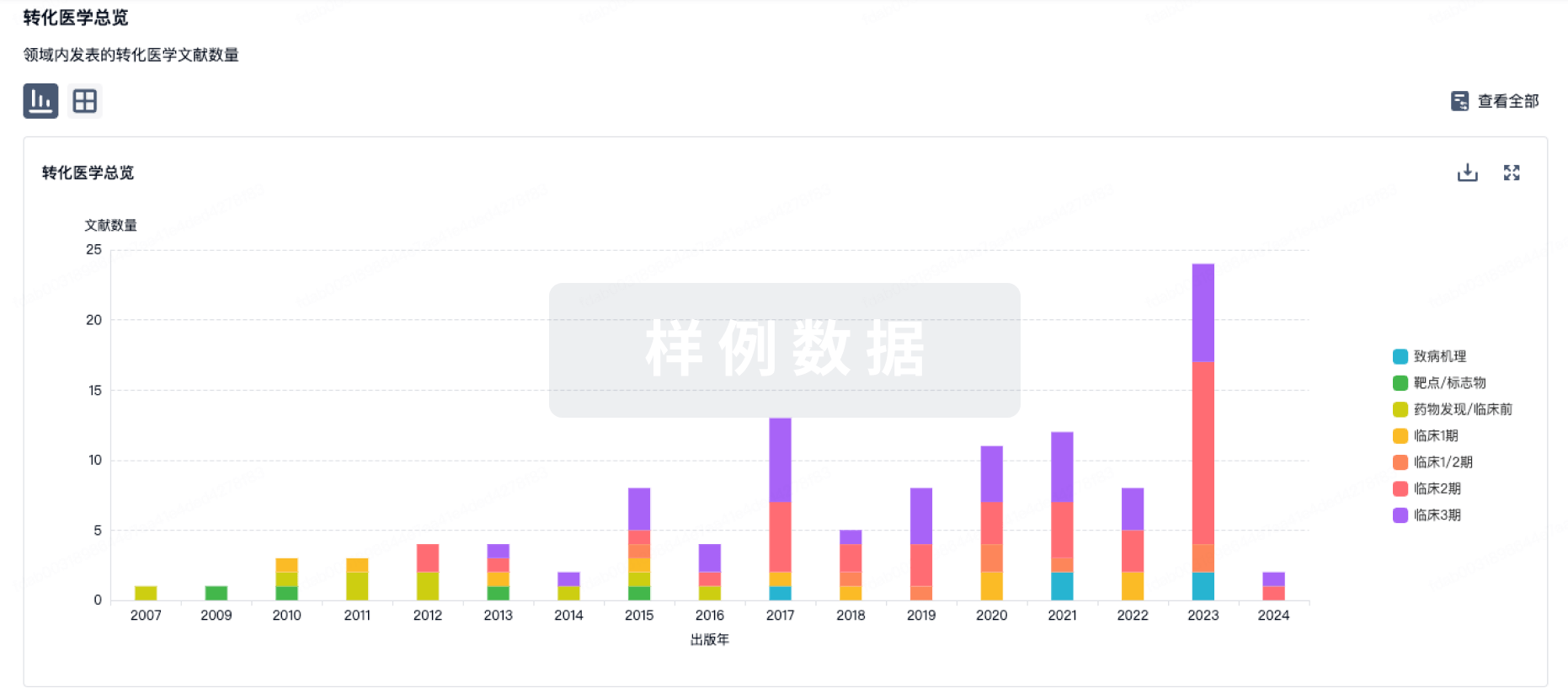
药物交易
使用我们的药物交易数据加速您的研究。
登录
或
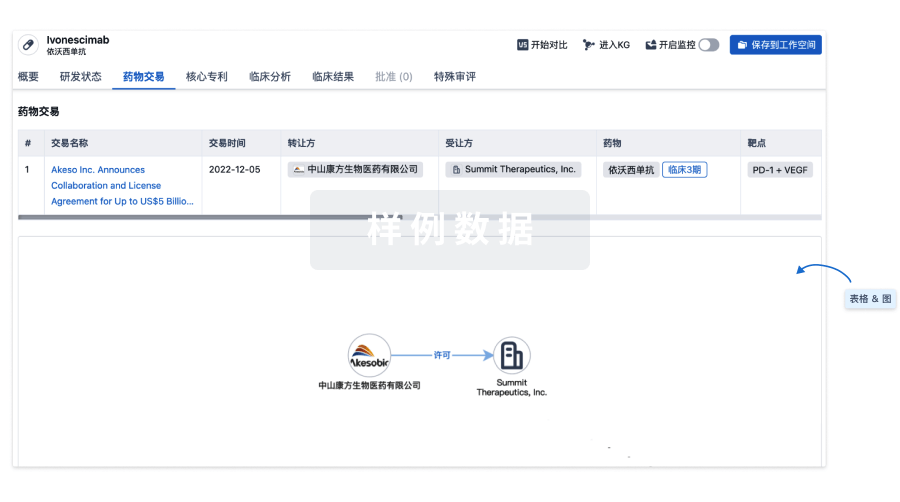
核心专利
使用我们的核心专利数据促进您的研究。
登录
或

临床分析
紧跟全球注册中心的最新临床试验。
登录
或
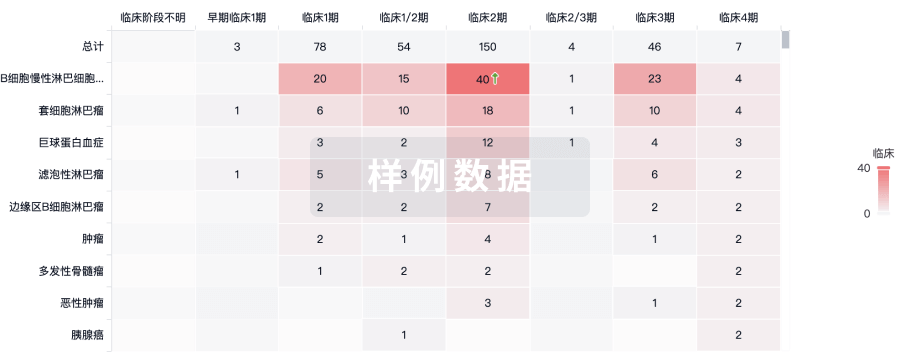
批准
利用最新的监管批准信息加速您的研究。
登录
或
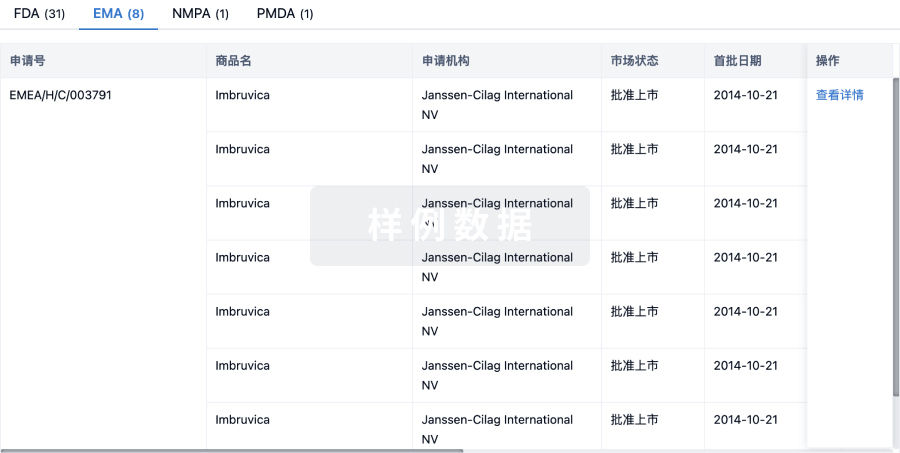
特殊审评
只需点击几下即可了解关键药物信息。
登录
或
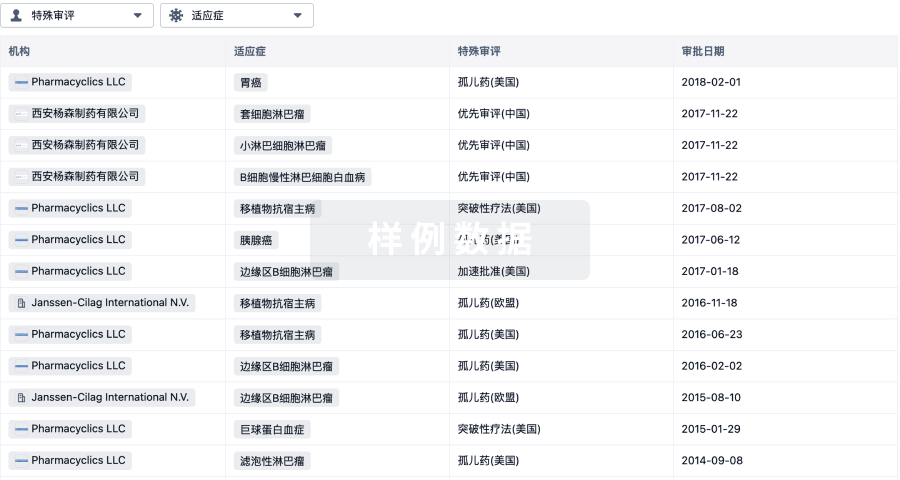
生物医药百科问答
全新生物医药AI Agent 覆盖科研全链路,让突破性发现快人一步
立即开始免费试用!
智慧芽新药情报库是智慧芽专为生命科学人士构建的基于AI的创新药情报平台,助您全方位提升您的研发与决策效率。
立即开始数据试用!
智慧芽新药库数据也通过智慧芽数据服务平台,以API或者数据包形式对外开放,助您更加充分利用智慧芽新药情报信息。
生物序列数据库
生物药研发创新
免费使用
化学结构数据库
小分子化药研发创新
免费使用
